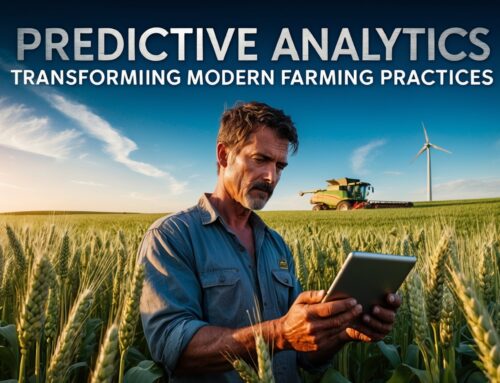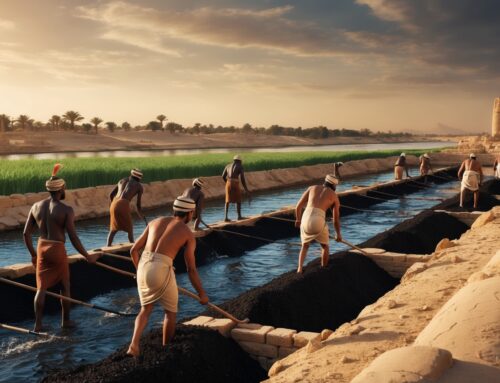Predictive analytics has become a transformative tool in modern agriculture, particularly in the management of soil moisture. By leveraging advanced models, weather forecasts, machine learning, and historical data, farmers can more effectively manage irrigation schedules, optimize water use, and ultimately enhance productivity. This detailed post explores how predictive analytics functions in soil moisture monitoring, the various types of predictive models utilized, the role of artificial intelligence (AI) and machine learning, and the advantages of integrating diverse data sources.
Understanding Predictive Analytics in Soil Moisture Management
Predictive analytics involves using historical data, statistical algorithms, and machine learning techniques to forecast future outcomes. In the context of soil moisture, predictive analytics aims to predict moisture levels across fields, enabling farmers to make informed irrigation decisions. By analyzing real-time soil data, historical records, and upcoming weather forecasts, predictive models can identify trends, anticipate changes, and generate precise irrigation schedules.
Soil moisture levels are influenced by multiple dynamic factors, such as rainfall, temperature, soil type, and crop growth stages. Predictive models help farmers manage these complexities, reducing the risk of over-irrigation or drought stress, improving water use efficiency, and ultimately optimizing crop yields.
Types of Predictive Models for Soil Moisture Monitoring
1. Regression Models
Regression models are statistical methods commonly used in predictive analytics to estimate soil moisture content. Linear regression is one of the simplest types, correlating moisture levels with variables like temperature, rainfall, and soil type. More advanced models, such as multiple regression, consider a combination of factors, allowing for a more nuanced prediction.
While regression models are relatively straightforward and easy to implement, they have limitations in capturing complex, non-linear relationships between factors affecting soil moisture. Therefore, they are often combined with other models to improve accuracy.
2. Time Series Models
Time series models are ideal for forecasting soil moisture over specific time periods. These models analyze historical soil moisture data to identify recurring patterns or trends that can predict future moisture content. A popular technique used is ARIMA (Auto-Regressive Integrated Moving Average), which helps generate a temporal sequence of soil moisture forecasts.
Time series models are particularly useful for identifying seasonal variations in soil moisture. They allow farmers to plan their irrigation schedules in advance, reducing unnecessary water usage and helping maintain optimum soil moisture during critical crop growth stages.
3. Machine Learning Models
Machine learning models are increasingly popular for predicting soil moisture levels due to their ability to handle large and complex datasets. Artificial Neural Networks (ANNs), Random Forests, and Support Vector Machines (SVMs) are examples of machine learning algorithms that can learn from past data and make highly accurate soil moisture predictions.
Machine learning models can analyze data from multiple sources, including soil sensors, weather stations, and satellite imagery. They can uncover hidden patterns in the data that simpler statistical models might miss, and they can account for non-linear interactions between variables. These models also improve over time as more data is fed into them, providing increasingly reliable forecasts.
4. Ensemble Models
Ensemble models are advanced predictive models that combine multiple algorithms to create a stronger and more accurate predictive model. Techniques like Random Forest or Gradient Boosting combine several decision trees to generate an output. These models are well-suited for soil moisture monitoring because they reduce the risk of overfitting and can handle complex, high-dimensional data.
Ensemble models are often used to integrate various data sources, such as sensor data, satellite imagery, and climatic information, providing a holistic view of the factors that affect soil moisture.
Role of AI and Machine Learning in Soil Moisture Prediction
Artificial Intelligence (AI) and machine learning are the driving forces behind modern predictive analytics. These technologies enable predictive models to learn from historical data, recognize complex relationships between variables, and adapt to new information. Here are some key roles of AI and machine learning in soil moisture prediction:
1. Data Integration and Processing
Machine learning models can handle data from multiple sources, such as soil moisture sensors, weather stations, satellite imagery, and historical soil records. These models analyze the relationships between these variables to predict soil moisture more accurately. Data integration is critical for providing a complete picture of how factors like weather, soil type, and topography interact to influence soil moisture dynamics.
2. Adaptive Learning
Machine learning algorithms are capable of adaptive learning, meaning they can learn and improve over time as new data is collected. Adaptive models allow farmers to receive increasingly accurate soil moisture predictions as the system continues to collect data from their specific fields, helping account for seasonal and environmental changes.
3. Handling Complex Interactions
Machine learning models are particularly effective in analyzing complex, non-linear interactions between multiple factors affecting soil moisture. For instance, soil moisture levels depend not only on precipitation but also on soil type, crop growth, temperature, and wind speed. Machine learning algorithms can analyze these complex relationships to produce more accurate soil moisture forecasts compared to traditional models.
Integrating Weather Forecasts, Climate Change Models, and Historical Data
1. Weather Forecasts
Weather forecasts are crucial for predicting soil moisture levels. By integrating weather forecast data into predictive models, farmers can anticipate changes in soil moisture due to upcoming rain, heatwaves, or frost. Accurate weather forecasting allows farmers to adjust irrigation schedules dynamically—for instance, reducing irrigation if significant rainfall is expected or increasing water supply during predicted dry spells.
2. Climate Change Models
Climate change is altering precipitation patterns, temperatures, and extreme weather events, which directly impacts soil moisture levels. Predictive models that incorporate climate change scenarios help farmers adapt to these changes. For instance, a farmer can use climate models to predict prolonged droughts or increased rainfall variability, allowing them to implement long-term irrigation strategies to maintain soil health.
3. Historical Soil Moisture Data
Historical soil moisture data is invaluable in predictive analytics, providing a basis for understanding how moisture levels change under different conditions. By analyzing this historical data, predictive models can recognize patterns and make better-informed predictions. Historical data also helps determine when irrigation was most effective, helping farmers refine their practices over time.
Practical Application of Predictive Analytics for Soil Moisture Monitoring
Data Collection
The first step in predictive analytics is data collection. Soil moisture sensors like Terrestream’s Irrigauge are used to gather real-time moisture data. Additional data from weather stations, satellite images, and historical soil records are also collected.
Data Analysis
Next, the collected data is fed into predictive models, which use machine learning algorithms to analyze relationships between the variables. By identifying trends and correlations, the model predicts future soil moisture levels, providing insights that help optimize irrigation schedules.
Forecast Generation and Implementation
The predictive model generates soil moisture forecasts that indicate how moisture levels are expected to change over the coming days or weeks. Farmers can use this information to adjust irrigation practices accordingly—for example, applying more water before a heatwave or reducing irrigation in anticipation of rain.
These predictions can also be used for zone-based irrigation, ensuring that specific areas of the field receive the appropriate amount of water based on their unique needs. This level of precision helps farmers conserve water, reduce costs, and maintain healthy crop growth.
Conclusion
Predictive analytics is revolutionizing the way farmers manage soil moisture, making it possible to optimize irrigation, save resources, and boost crop yields. By integrating machine learning, weather forecasts, climate models, and historical data, predictive models provide a powerful tool for modern agriculture. With tools like Terrestream’s Irrigauge, FieldLink, and FieldHub, farmers can make data-driven decisions, proactively manage irrigation, and ensure the long-term health of their fields. Predictive analytics for soil moisture monitoring is paving the way for more sustainable and resilient farming practices, allowing farmers to adapt to an ever-changing environment with confidence and precision.





